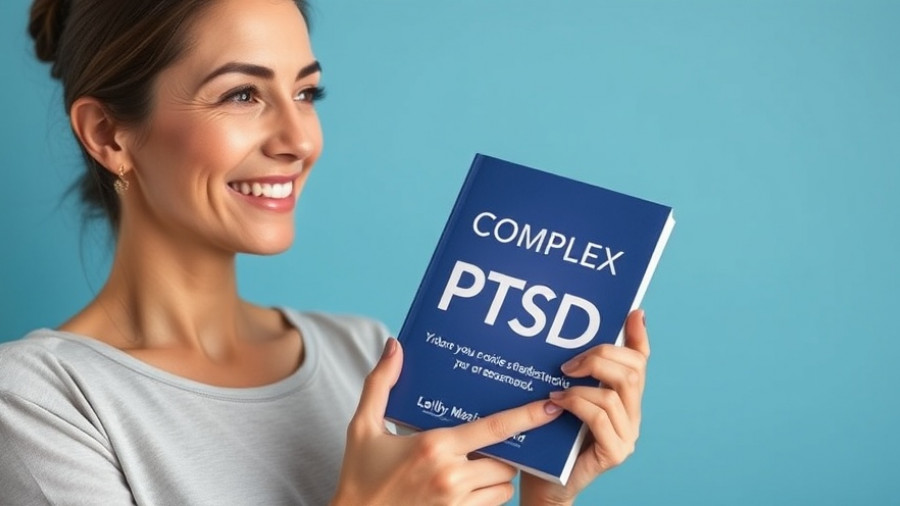
Understanding Nightmares and Night Terrors: A Closer Look
Nightmares and night terrors often haunt those familiar with the darkness of troubled sleep. For children and adults alike, these experiences can bring physical and emotional distress, particularly for those battling trauma or PTSD. Yet understanding the difference between nightmares and night terrors is crucial, especially for parents who may inadvertently confuse the two.
In 'Trauma-Fueled Nightmares and Night Terrors with PTSD,' the discussion dives into the challenges posed by sleep disturbances linked to trauma, exploring key insights that sparked deeper analysis on our end.
Nightmares are vivid dreams filled with disturbing imagery, usually occurring during REM sleep. This type of sleep is identified by increased brain activity and is when most dreaming occurs. Nightmares can evoke strong emotions like fear, anxiety, or sadness, lingering in the mind after waking and making it hard to drift back into sleep. For some, recurring nightmares signal a more obsessive cycle, leading to what's medically recognized as nightmare disorder, particularly prominent among those who have faced trauma, with studies indicating that 70-90% of PTSD patients experience nightmares.
The Distinction of Night Terrors
Contrastingly, night terrors—often mistaken for nightmares—occur during deep non-REM sleep and typically happen within the first few hours of sleep. Signs of a night terror include thrashing, intense fear, rapid breathing, and a lack of awareness. The highest incident rate of night terrors is usually among children aged 3 to 7, with about 10% to 30% experiencing them. Adults can also have night terrors, particularly those with a history of trauma, but the numbers remain relatively low (1-3%).
While the experience can be frightening for onlookers, those suffering night terrors generally don't remember the events. Treatment often involves ensuring a safe sleep environment and maintaining consistent sleep hygiene. It's crucial for caregivers to remember that waking someone experiencing a night terror could intensify the confusion and distress.
Navigating the Impact of Trauma on Sleep
The connection between trauma and nightmares cannot be overstated. Memory processing in individuals with PTSD can become derailed, leading to distressing dreams that replay unresolved events. Acknowledging this fact opens the door for new coping strategies: therapy focused on trauma, such as EMDR (Eye Movement Desensitization and Reprocessing) or relaxation techniques including deep breathing exercises, can substantially alleviate the burden. This emphasizes a growing need for mental health awareness and education tailored to trauma recovery.
Imagery Rehearsal Therapy is one effective intervention for handling nightmares. By rewriting the narrative of a nightmare during the day, individuals can aid their brains in processing the dream healthily. This process embodies a powerful coping strategy, demonstrating personal growth and resilience even amid darkness.
Strategies for Healing: Improving Sleep Hygiene
To combat both nightmares and night terrors, focusing on sleep hygiene is critical. This includes regular sleep schedules, a calm sleeping environment, and avoiding substances that disrupt sleep, such as caffeine and alcohol. Strong sleep hygiene can pave the way for better mental and emotional health, leading individuals to experience a more restful night's sleep without the fear of bedtime.
Professionals highlight that taking these steps towards improving sleep can be a form of self-care and personal growth. Additionally, reaching out for help through counseling or therapy can be a heartening step in addressing deeper issues raised during these nocturnal battles, merging individual journeys with community resilience.
Conclusion: Taking Action Towards Mental Wellness
In examining trauma-fueled nightmares and night terrors, there's a clear need for broadening our perspective on sleep disturbances as symptoms that require understanding and care. Recognizing these disorders’ differences allows for tailored strategies that promote healing, self-improvement, and mental wellness.
So whether you’re a parent worried about your child’s sleeping patterns or someone navigating the shadows of their mind due to PTSD, creating healthy bedtime habits and seeking professional support are first steps towards a more restful and supportive journey. If you or someone you know struggles with this aspect of mental health, consider exploring therapy options available in your area with resources geared towards trauma recovery.
 Add Row
Add Row  Add
Add 




Write A Comment